Top 10 Tips for Gardening in Spring
Have you been excited for spring to finally come around, but now that it’s here you’re not sure where to start? It’s completely normal to feel a little overwhelmed - after a few quiet winter months, suddenly there are so many tasks that need to be done to keep your garden thriving.
From tidying up flower beds to sharpening tools and planting summer-flowering bulbs, there are multiple things that you can do to have a productive season.
.: Clean and Sharpen Gardening Tools
Unwashed tools are likely to be covered in old sap and soil. Not washing them regularly can spread diseases and weed seeds around your garden. Dirty tools are also more likely to become rusty, meaning they will become weaker and harder to use over time.
Similarly, a tool with blunt blades will require more strength to use, making it more difficult to do so. Blunt blades can also damage your plants by tearing them, instead of giving them a clean, sharp cut. This affects both the appearance and health of your plants, making them look uneven and weakening them over time.
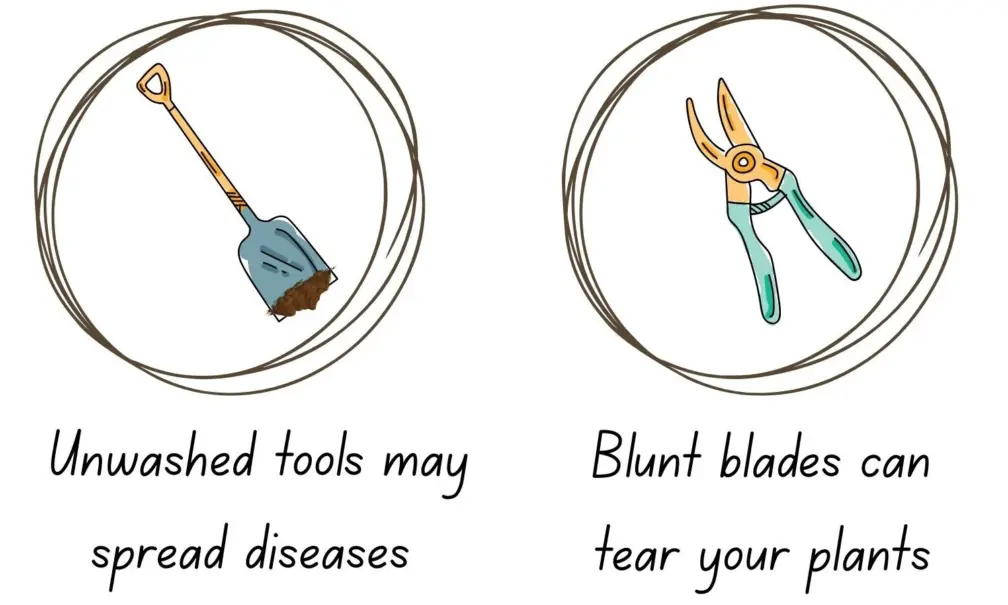
This is why cleaning and sharpening your tools will make all the difference when it comes to gardening in spring. It is essential to keep your plants healthy and thriving. Some of the tools you should focus on include shovels, spades, hoes, lawn mower blades, and shears.
Start by cleaning the blade with a wire brush or sandpaper to remove dirt, rust, and debris. If the tool is still dirty, hose it down and dry it with an old towel to prevent the metal parts from rusting and the wooden parts from absorbing water.
Once this is done, it is time to sharpen the blade. This process may be slightly different for each tool, so make sure to do your research first. Check out our ‘Lawn Mower Maintenance: All You Need to Know’ blog to learn how to sharpen your mower’s blades.
Finish by taking a cloth, dipping it in oil, and applying a thin layer of it to any wooden parts, including handles. Make sure to allow these to dry for 24 hours.
.: Clean Your Garden Shed
Start by de-cluttering it and throwing anything that you no longer need away. This can include any old pots or tools that no longer work. This will allow you to make space and be more organised for the season ahead, saving you time and stress in the long run. It also reduces the risk of any accidents happening due to items not being stored properly.
Once this is done, give it a general clean and seal any entry points. A tidy, dry shed allows for moisture-free storage, helping to prevent tools from rusting, seeds from deteriorating, and fertilisers from leaking. Sealing any entry points, on the other hand, will keep pests like rats and mice from entering the shed. This is important as these can chew through wood, plastic, and cardboard, potentially damaging your tools and destroying any wires.
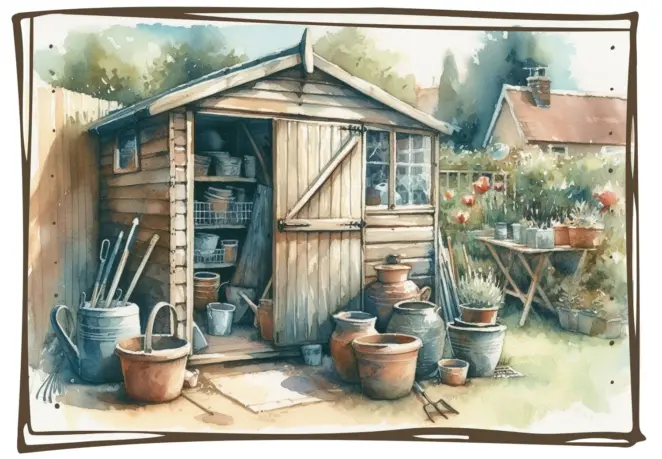
.: Invite Birds Into Your Garden
Birds can be very relaxing to look at, but there are multiple other reasons why you should invite them to your garden this spring.
Birds often feed on a variety of insects, including grubs, leatherjackets, aphids, caterpillars, and even mosquitoes! Because of this, encouraging them to visit your garden can be a great, natural method of controlling the pest population.
Having birds in your garden can also reduce the number of weeds that your garden has. Some species, including sparrows and finches feed on weed seeds, stopping them from spreading and germinating.
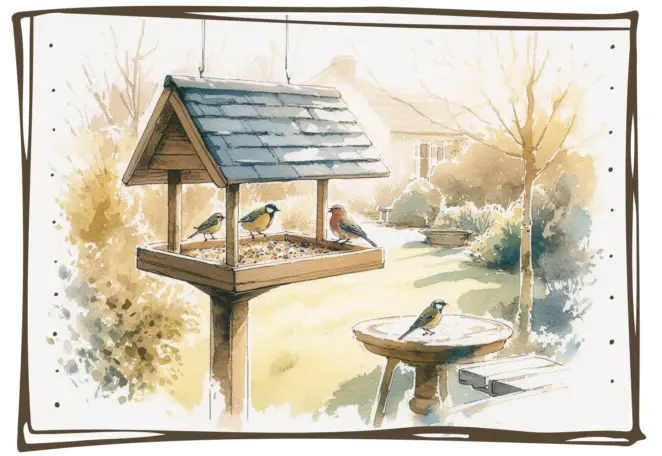
To invite birds into your garden, make sure to offer them food, water, and shelter. You can buy a bird feeder and fill it with some seeds and a bird bath to give them access to water that they can drink and bathe in. It is important to regularly refill the feeder and wash it at least once a week to keep it clean. The water in the bird bath should also be replaced every day to help prevent the spread of any diseases.
To provide shelter, consider adding a few birdhouses to your garden. These should be placed between 1 to 5 metres away from the ground to keep the birds away from any predators.
.: Tidy up Flower Beds and Borders
Tidying up flower beds and borders should be an essential part of your gardening in spring routine.
Tidy flower beds and borders make your garden look prepared for the season and help to minimise the spread of any diseases from dead plant matter.
To give them a general clean, start by removing any fallen leaves, twigs, and any other debris. You can add these to a compost pile or a bin if you plan on using them in the future. If you come across any weeds, make sure to remove them and throw them away. Adding weeds to your compost pile can cause their seeds to germinate, causing problems later and should be avoided.
After this is done, you should be able to see bare soil. Lightly dig over the bed or border, making sure not to harm any existing plants that you want to keep. Once this is done, you can add compost, manure, or leaf mould to make the soil more nutrient-rich and ready for spring planting.
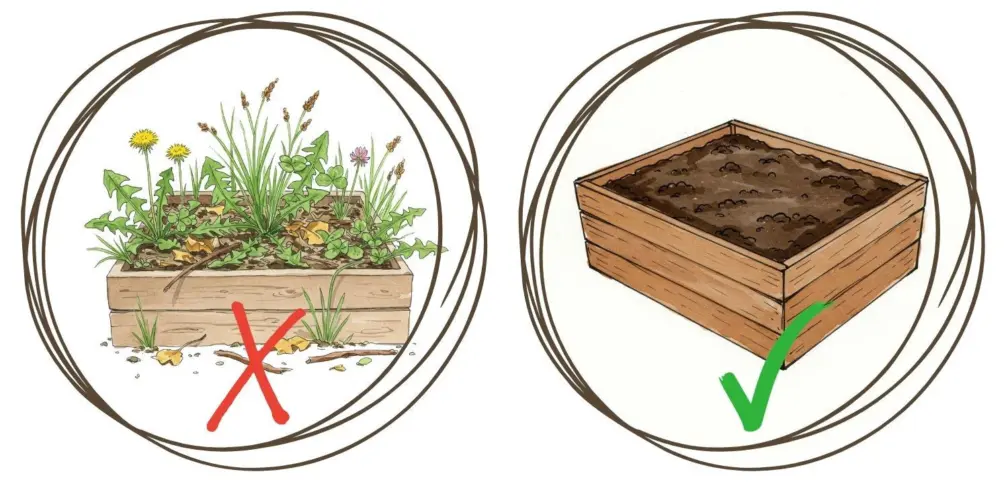
.: Plant Summer-Flowering Bulbs
Planning summer-flowering bulbs is a key activity during gardening in spring, especially between March and May. This gives the plants enough time to establish their roots before the hot summer months arrive.
Some bulbs to consider include dahlias and lilies.
Dahlias are well known for their vibrant appearance and come in a variety of colours, including red, pink, yellow, orange, purple, and white. Thanks to their wide range of colours, they make an excellent addition to any garden - just choose a variety that best suits your garden’s aesthetic most. They're also easy to care for and can be grown in the ground or in containers.
Similarly, lilies are considered easy to grow and produce large, fragrant flowers that, depending on the variety, can be trumpet- or bowl-shaped. Some even have petals that curl back. Lilies come in shades of yellow, orange, red, pink, and even purple or green. So, if you want your garden to both look and smell magical, this is the plant for you.

.: Wash Your Greenhouse

Over the winter, many greenhouses develop algae, mould, and fungus. Sometimes, they can even be affected by multiple pest infestations, including aphids, caterpillars, mites, slugs, and many more. If not dealt with before the growing season starts, these could negatively affect your plants. This is why washing your greenhouse is an important part of successful gardening in spring.
To clean your greenhouse, make sure to choose a sunny day with the outdoor temperature above 8 degrees Celsius. This will allow you to take the plants outside if you need to and ventilate the greenhouse to prevent humidity from building up.
Start by sweeping or vacuuming the floor and then use soapy water to scrub any surfaces that need to be cleaned. Once this is done, use warm water and a soft cloth or sponge to clean the glass, both inside and outside of the greenhouse. While it may be tempting, avoid using brushes, as these can scratch the glass. Finish the whole process by cleaning the floor.
.: Lay Turf
If you do not already have a new lawn or want to start again, spring is the perfect time to lay new turf and create your dream garden.
High-quality turf can be laid at almost any time of the year, as long as temperature isn’t below zero and the ground is not frozen. However, doing so in spring is ideal as the soil is likely to be moist and the temperatures are warm enough for the grass to establish quickly. Turf also has enough time to develop strong roots before summer, meaning you will be able to enjoy your garden fully, without having to worry whether it is too early to step on your new grass.
New turf also needs to be well hydrated. During the hot weather, it should be watered in the morning and evening until the turf’s roots have established. To check this, lift a corner of the turf slightly - if you feel resistance, the roots are established. Spring showers can make this easier, reducing how often you need to water your turf.
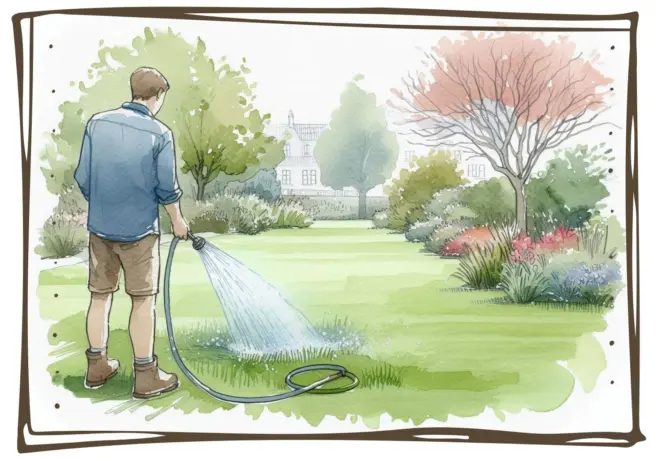
Check out our ‘How to Lay Turf: The Ultimate Guide’ for step-by-step instructions on how to lay your new lawn like a professional.
.: Mow Your Lawn
Once the risk of frost has passed and temperatures slowly start to rise, grass wakes up from its dormant state and begins growing again as early as mid-March. This is the perfect time to grab your lawn mower and give it a much-needed mow.
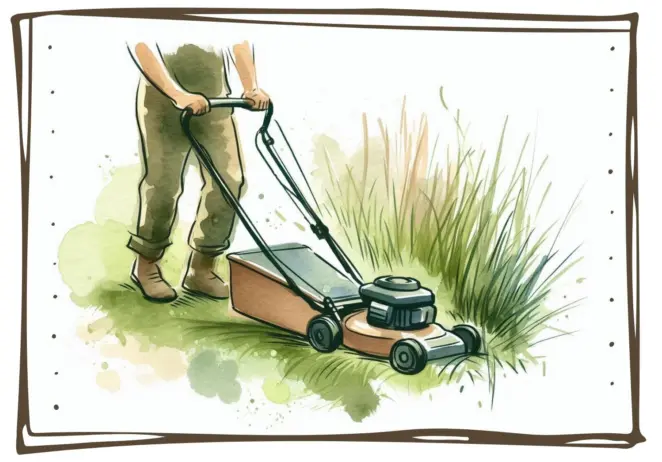
Make sure to choose a rain-free day and check that your grass is fully dry. Wet grass is heavier and more resilient than dry grass, meaning your mower is less likely to get a good grip on it. Because of this, there is a high chance it may rip or tear the grass blades, weakening them and producing uneven results. To learn more about this, visit our ‘Can You Cut Wet Grass?’ blog.
If the grass is dry, set your lawn mower to the highest setting. This is important because you should never take off more than one-third of the grass’s length. Cutting it down further in one go can stress the turf, making it more susceptible to diseases and thinning. In extreme cases, it can even die.
After the first mow, you should mow your lawn regularly every 7 - 10 days during the growing season. You can also start gradually reducing the mowing height with each mow if you wish to do so.
.: Add Mulch
Mulch is a thick layer of material, such as wood chips or compost, that is placed around plants. It helps to lock moisture into the soil, control weeds, and protect the plants from extreme changes in temperature by acting as an insulator. On top of this, it’s a great way to refresh your garden and give it a neat, tidy appearance.
Spring is one of the best times to mulch, but if done too early, it can trap cold moisture in the soil, slowing down plant growth. Because of this, it is best to wait until mid to late spring, once the soil has warmed up and before the weeds have germinated.
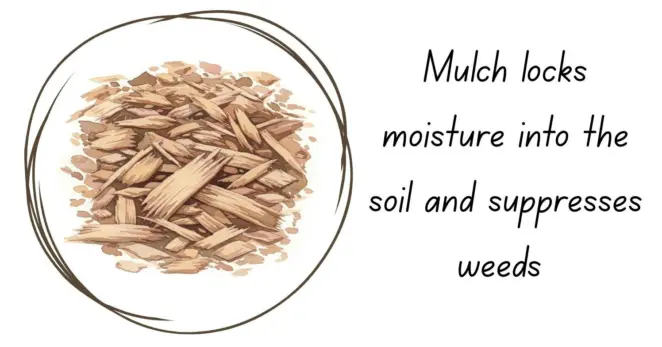
To apply mulch, start by raking the surface of the soil to level it. This will ensure that the mulch doesn’t get washed away into lower areas during heavy rain. An uneven layer of mulch is not going to be as effective, as it is more likely to let weeds through and won’t retain moisture as well in thinner areas. Then, spread a 5 cm layer of mulch, but avoid placing it too close to the plants, as the constantly moist environment can create a breeding ground for pests and diseases.
.: Prune Trees and Shrubs
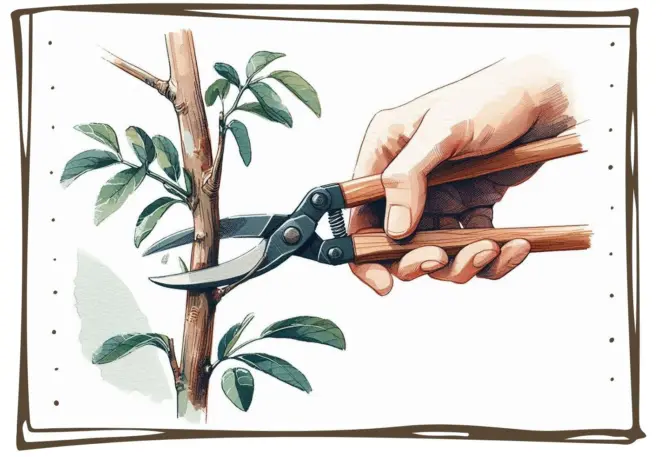
Pruning is a great way to keep your plants healthy and looking their best for years to come. It involves removing any diseased, damaged, or dead branches. Pruning can also be used to shape the plant and remove any overcrowded growth.
This is why it should be part of your gardening in spring routine. Spring is a good time to prune any fruit trees in case you didn’t get to do it in winter, including apple and cherry trees. Young plum trees will also benefit from pruning in early spring, while the older, established trees prefer to be pruned at the end of summer instead.
Some shrubs, including lavender, citrus, and rosemary will also benefit from being pruned during the spring to prepare them for the growing season.
While spring can feel overwhelming at first, there are many tasks you can do to ensure your garden thrives in the months ahead.
From washing your tools to prevent the spread of disease, to laying turf and planting summer-flowering bulbs to help your garden look its best later on, spring is truly the time to make a difference.
Looking for lawn-specific advice? Visit our ‘Seasonal Lawn Care: Spring’ guide to learn how to keep your turf thriving at this time of year.


